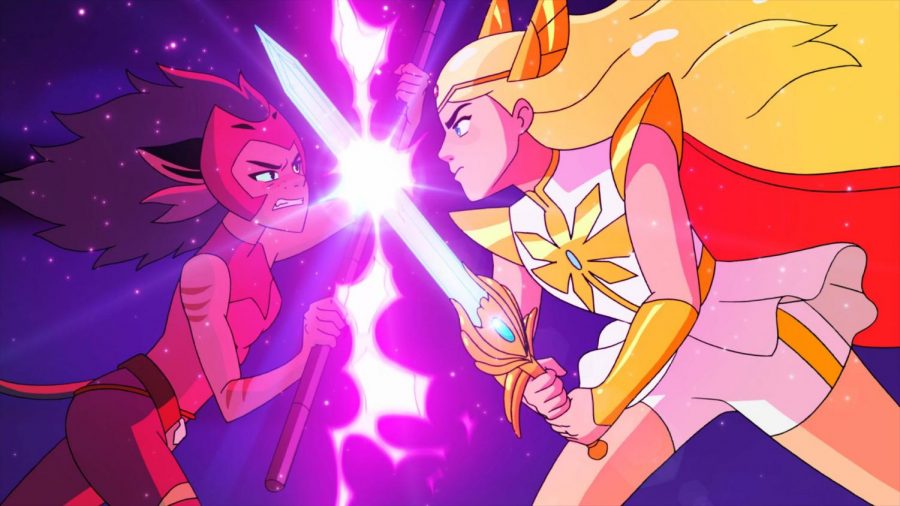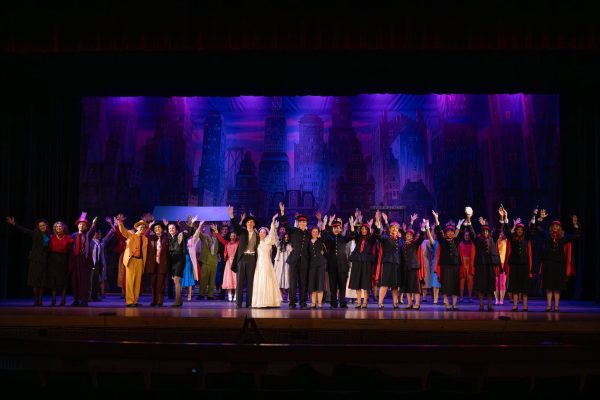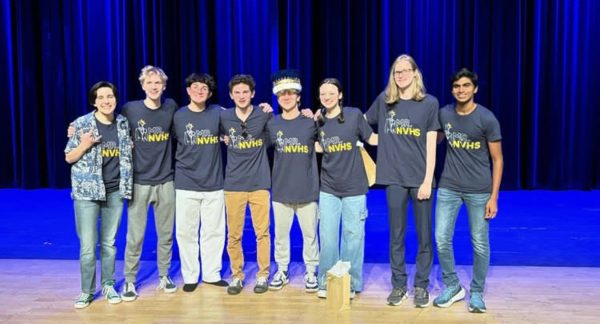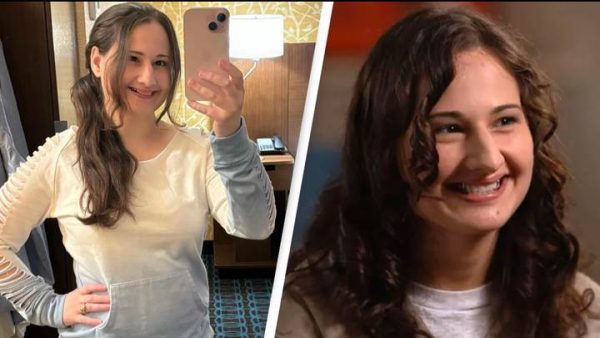Why “She-Ra and the Princesses of Power” is Netflix’s greatest original series
Netflix/DreamWorks Animation Television
A screencapture from the opening of “She-Ra and the Princesses of Power”
Warning: this review contains spoilers.
Netflix and streaming services as a whole have revolutionized the way we consume content. Binge-watching has replaced “tune in next week,” and the hyperconnected nature of today’s world allows millions of people to immediately find a crowd to converse with about any given show or movie. One of the major pitfalls that comes from this, however, is that the conversation always tends to revolve around whatever is currently raking in the most views and ratings. So many shows and movies get swept under the rug by algorithms and marketing, and this results in many overlooked titles in today’s entertainment. However, this does make it that much more satisfying when you do happen to stumble upon those titles. For me, this show was “She-Ra and the Princesses of Power,” which I initially dismissed as just another kids show before realizing that it might just be Netflix’s single most underrated original work, as well as one of the most important and riveting pieces of children’s entertainment in recent years.
“She-Ra and the Princesses of Power” is a reboot of the 1985 series of a similar name, “She-Ra: Princess of Power.” Filmation’s original series was a spin off of “He-Man and the Masters of the Universe” that was directed towards a young female audience and made in collaboration with toy manufacturing company Mattel. 93 episodes, two seasons, and just over a year later, “Princess of Power” was cancelled, and the character of She-Ra wasn’t mentioned in the subsequent He-Man series “Masters of the Universe vs. The Snake Men.” It wasn’t until Noelle Stevenson, the Eisner award winning cartoonist behind the comics “Nimona” and “Lumberjanes,” pitched the reboot to Netflix in 2016 that the character would be brought back to life—and like never before.
“She-Ra” takes place on the magical planet of Etheria, where a battle is raging between the Horde, led by the tyrannical Hordak, and the Rebellion that was once led by all of the princesses of Etheria. Adora and Catra are best friends and orphans who were both raised as soldiers for the Horde. One day, the two find themselves in the Rebellion’s Whispering Woods and Adora stumbles upon a sword that allows her to transform into the titular She-Ra, a legendary warrior whose destiny is to help save Etheria. After discovering that what the Horde has been telling her has been lies, she defects and joins the Rebellion in order to help her new friends Bow and Glimmer rebuild the Princess Alliance to help stop the Horde. Catra, devastated by Adora abandoning her, begins to develop her own ambitions and plot her revenge.
If that synopsis sounds basic, that’s because… well, it kind of is. The first season of “She-Ra” is the most simple the show gets. While it’s still leagues above other kids programs, its debut falters in finding an economical method of delivering its exposition and balancing it with its humor, but makes up for that by laying out the foundation for the lore of Etheria and the series’ recurring themes of friendship, love, abuse and trauma and just generally being artistically beautiful and charming. The next four seasons exponentially improve on its strengths and diminish its weaknesses by trimming the fat from its narrative, and it’s delightful to watch it slowly overcome those flaws.
But the main draw for “She-Ra” isn’t its animation or comedy; it’s the characters that truly sell this show. Whereas the original 80’s show had every character be the same exact size, shape and skin tone in order to sell more toys, all of the characters in the reboot are diverse in their personalities and appearance, with some characters reinforcing themes of body positivity (it has even been theorized by some viewers that the character of Entrapta is neurodivergent). The entire voice cast helps the characters all feel like real people, and the writers pull off an incredible feat of making every character three dimensional and likable. Even the enemies are given this treatment, which is what makes the show so complex and investing since you know that characters like Scorpia are good people at heart that are simply on the wrong side of the fight. Any of the characters could be thrown in a room with each other and they’d all miraculously bounce off of each other effortlessly, like with Entrapta and Hordak’s relationship and a scene in the second season with Scorpia and the swashbuckler Sea Hawk.
Catra in particular is a character that does horrible things and yet the show gives us plenty of moments where we empathize with her. This is achieved by showing her backstory as a child growing up under the abusive parenting of Shadow Weaver, who always favored Adora and blamed everything on Catra. It never tries to use those moments as excuses for her behavior—after all, Catra admits that she always knew that the Horde was evil and instead thought that as long as she was with Adora, everything would be fine—but simply asks the audience to understand her. The core of the show is the relationship between her and Adora, and it’s made very clear that while she may despise Adora for leaving her, she still doesn’t truly hate her and only wants to prove to the Horde and herself that she doesn’t need Adora to be by her side in order to succeed and be happy, regardless of what she actually wants. It’s that anticipation of the moment when she realizes that what she’s doing is wrong that makes her such a gripping character, and it promotes a theme of rehabilitation over punishment.
But by far the biggest difference between the original and the reboot, and the reason that the reboot has garnered its current praise and fanbase, is because of its positive representation of LGBTQ+ characters. Many of the characters openly talk about or are implied to be gay, and all of the other characters that aren’t are never clearly defined as heterosexual. The shapeshifter Double Trouble that’s introduced in the fourth season is genderqueer and uses singular they/them pronouns (as well as being voiced by a non binary voice actor, Jacob Tobia). Although it never became canon, princess Perfuma was originally going to be identified as a transgender woman. It’s refreshing to see a piece of entertainment that’s so defiant of heteronormativity, to say the least.
Some of the show’s detractors have illogically cited the fact that its female characters supposedly aren’t as feminine as the original 1985 series (mind you that in the first season Adora is 17-18, so people saying that her physique isn’t feminine enough is just an insanely creepy thing to say) and that there are gay characters and that all of this pushes an agenda onto impressionable youth. In reality, all it’s really doing is teaching children about kindness and love. The queerness of the characters in “She-Ra” is never mentioned. In fact, the word gay is never even said once throughout all five seasons, and the characters that are gay are never treated differently because of who they are. Teaching people that the LGBTQ+ community is not above or below heterosexual and cisgender people is a crucial lesson for today. It’s not indoctrinating children like some people insist it is, but instead telling them that it doesn’t matter who they are, and I can’t stress how beautiful that is.
That’s not to say that the characters are the only reason the series is worthy of praise, though. The fifth and final season of “She-Ra” premiered one year ago on May 15 and is nothing short of genuine perfection, and in my mind is what cements this as Netflix’s greatest original show. The first real look at Horde Prime, the villainous warlord that was introduced in the season three finale, ramps up the stakes, and the signature best friend squad spending most of the season in space only sends them higher since it reminds the viewer that it isn’t just Etheria at stake, but the entire universe. This in turn makes every moment carry a heavy emotional weight to it, but it never fails at delivering light comedic moments alongside them. Not a single second feels wasted or dull, and the consistent pacing never allows a second to truly breathe. Despite the looming threat of Horde Prime throughout the season, the main focus is placed on the relationship between Adora and Catra as her immensely satisfying redemption arc begins. It culminates with the two finally confessing their love for each other and kissing, literally saving the universe with the power of love, and it’s a moment that’s as game-changing for television as it is emotional and exquisite. Every character is given the happy ending that they deserve, and it’s one of the most moving, heartwarming and benevolent works of art that I’ve ever seen.
“She-Ra and the Princesses of Power” is the kind of show that leaves me so stupefied that I’d go as far as to call it a miracle. It’s a piece of entertainment that not only makes me excited to see where children’s programming will go next but also one that genuinely makes me hopeful for the world. It’s the defining series of the streaming era, one that’s overflowing with artistry and love, and I’m grateful that current and future generations will be able to grow up on this show and that I’ll get to carry it with me. An absolutely essential must-watch.
Your donation will support the student journalists of Neuqua Valley High School. Your contribution will allow us to print our next newspaper edition as well as help us purchase equipment and cover our annual website hosting costs.







